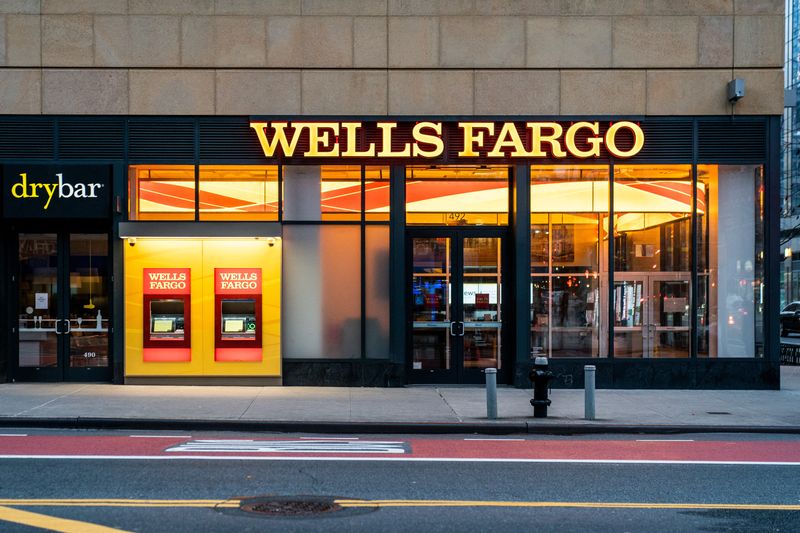Noor Zainab Hussain, Syed Azhar, Manya Saini
(Reuters) – Wells Fargo & Co. reported lower second-quarter profits and higher deposit costs amid fierce competition for customers, causing interest income to fall short of analysts’ expectations, sending its shares tumbling more than 6 percent.
Net interest income (NII) fell 9% to $11.92 billion, compared with analysts’ average forecast of $12.12 billion, according to LSEG data.
The firm reiterated on Friday that it expects the NII to fall 7-9% this year.
“At this point in the year, we expect to be at the high end of that range, about 8% to 9% decline,” Wells Fargo Chief Financial Officer Michael Santomasimo told reporters on an earnings conference call.
Citigroup analyst Keith Horowitz said in a note that management’s new guidance on net interest income will likely put pressure on the stock price, as rising net interest income was part of investors’ “bull thesis” going into the quarter.
The bank said average deposit costs rose to 1.84 percent in the second quarter from 1.13 percent a year earlier.
Banks are having to pay more to retain customers seeking higher returns, while also dealing with the impact of longer-term high interest rates as borrowers hesitate to take on new loans.
“Interest rate expectations continue to change, so we’ll have to wait and see how that plays out and how that translates into actions,” Santomassimo said.
Net profit for the three months ended June 30 fell to $4.91 billion from $4.94 billion a year earlier.
The bank also said it now expects non-interest expenses to be about $54 billion in 2024, up from its previous forecast of about $52.6 billion.
But Wells Fargo’s second-quarter profit beat expectations, helped by higher investment-banking fees.
The company reported earnings per share of $1.33, compared with LSEG’s forecast of $1.29.
The fourth-largest U.S. bank reported commercial real estate (CRE) net charge-offs (the amount of loans that are not expected to be collected) of $271 million, or 74 basis points of the average loan size, primarily due to growth in the office sector.
The bank has sought to reduce its exposure to real estate as the sector’s troubles deepened over the past year, boosting reserves for possible defaults, particularly in office space, but executives say its real estate portfolio remains manageable.
Strengthening investment banking
Investment banking was a bright spot for the bank in the second quarter. Rival JPMorgan Chase also reported a 25% increase in second-quarter profit on Friday, helped by higher investment-banking fees.
Citigroup’s profit was boosted by a 60% increase in investment-banking revenue in the second quarter.
“Growth in fee revenue continues to offset the expected decline in net interest revenue,” Wells Fargo CEO Charlie Scharf said in a statement.
The bank’s investment banking revenue rose 38 percent to $430 million.
Under Scharf, Wells Fargo has hired executives from rivals and beefed up its investment banking and trading businesses.
Global mergers and acquisitions deal value reached $1.6 trillion in the first half of this year, up 20 percent from the same period last year, according to data from Dealogic. Equity capital markets deal value increased 10 percent in the same period.
Still, Wells Fargo remains subject to a $1.95 trillion asset cap that prevents it from growing any more until regulators determine it has resolved the issues from its fake-accounts scandal.
The bank still has eight outstanding consent orders after the Office of the Comptroller of the Currency ended its 2016 penalties in February.
(Reporting by Noor Zainab Hussain and Manya Saini in Bengaluru and Syed Azhar in New York; Editing by Ranan Nguyen and Sreeraj Kaluvilla)


